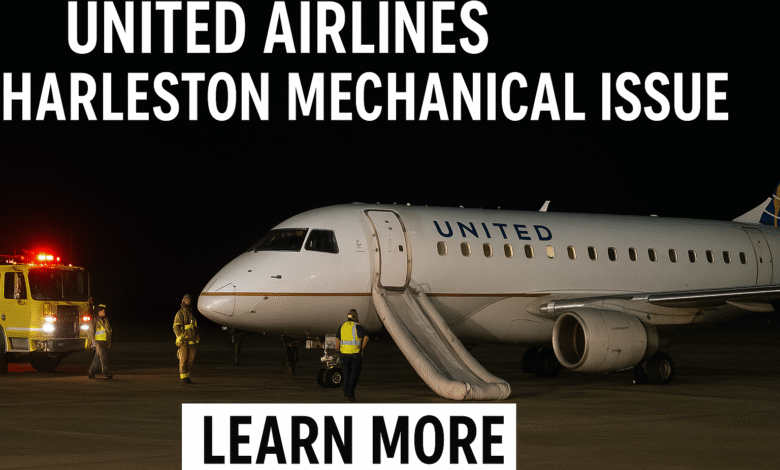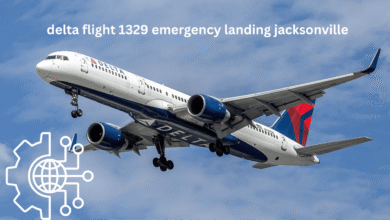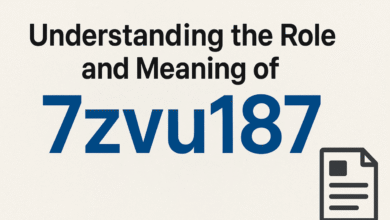United Airlines Charleston Mechanical Issue: A Complete Overview

The united airlines charleston mechanical issue made headlines in June 2025 when a late-night flight had to be evacuated after an emergency landing at Charleston International Airport. This situation unfolded after the aircraft experienced a critical problem with one of its engines, creating both concern and relief among passengers. Although everyone made it out safely, the event left many questions about how airlines handle such situations, how mechanical problems develop, and what the passenger experience looks like in these moments.
Timeline of events at Charleston International Airport
The flight involved in the united airlines charleston mechanical issue was traveling from Washington Dulles to Charleston. As the aircraft approached the destination, one of its engines reportedly shut down. After touchdown, the cockpit received a warning about a potential engine fire. Out of an abundance of caution, the crew initiated an emergency evacuation.
Passengers were asked to leave the aircraft using inflatable slides. Emergency vehicles, including multiple fire trucks, arrived at the scene within minutes. Although no flames were visible, the warning system prompted immediate action. The passengers were later transported from the runway to the terminal, with some expressing frustration about how long this part of the process took.
Passenger accounts of the evacuation
Eyewitness reports added another layer to understanding the united airlines charleston mechanical issue. Some passengers described the slide evacuation as smooth and organized, with children and older travelers being assisted first. Others noted that while the crew maintained calm and clear instructions, the waiting period on the tarmac was stressful.
A number of travelers also shared their experiences online, pointing out how frightening it felt to hear about an engine problem while still on board. Despite the chaos, many praised the professionalism of the crew for guiding them through the emergency.
Understanding mechanical issues in modern aircraft
Mechanical issues are not uncommon in aviation, though most are minor and resolved before takeoff. In the case of the united airlines charleston mechanical issue, the shutdown of one engine coupled with a fire warning created a rare but serious scenario. Aircraft such as the Embraer E175, which was involved here, are designed to operate safely even if one engine fails, but the additional fire warning meant safety procedures had to be taken to the highest level.
Airplanes undergo rigorous maintenance and checks, but no system is entirely immune to faults. This incident serves as a reminder that while flying remains one of the safest ways to travel, unexpected situations can and do happen.
The emergency response at the airport
The emergency response to the united airlines charleston mechanical issue involved not only the flight crew but also airport teams. Charleston International activated its emergency protocols, with fire and rescue crews on the ground as soon as the aircraft stopped. Their presence reassured passengers, even though the event turned out not to involve visible flames.
Passengers were later escorted into the terminal, though many pointed out that the time spent on the runway after the evacuation felt longer than expected. These delays can happen when crews ensure the aircraft is safe and secure before allowing further movement.
Passenger compensation and concerns
One of the biggest debates following the united airlines charleston mechanical issue revolved around how passengers were compensated. Reports indicated that some were given small vouchers worth around $75. For many, this seemed insufficient compared to the fear and disruption they faced during the evacuation.
Travelers often expect airlines to provide not only financial compensation but also clear communication after such stressful situations. In this case, while safety was managed well, the communication about what exactly had happened left many passengers searching for answers.
Lessons learned from the Charleston event
The united airlines charleston mechanical issue highlighted several important points for both the airline industry and travelers.
- Flight crews are highly trained to manage emergencies calmly and effectively.
- Mechanical systems, while advanced, are not infallible and require constant monitoring.
- Emergency evacuations, though rare, are carried out with passenger safety as the top priority.
- Communication and support after an incident play a big role in how passengers perceive their overall experience.
These takeaways matter not only for United Airlines but also for the broader aviation community, which continuously looks for ways to improve safety and passenger care.
Broader context of airline mechanical issues
The united airlines charleston mechanical issue is part of a larger conversation about mechanical reliability in commercial aviation. Airlines worldwide operate thousands of flights daily, and most landings are routine. However, when an incident like this occurs, it captures attention because of the risks associated with engine problems.
In many ways, this event also demonstrated how safety measures function exactly as designed. The aircraft landed safely on one engine, the warning system alerted the crew, and evacuation procedures were followed without loss of life.
Impact on passenger trust
While the incident did not result in injuries, the united airlines charleston mechanical issue understandably shook passenger confidence. Trust in airlines depends on both the ability to keep flights safe and the way they handle unexpected problems.
For some passengers, the quick action of the crew restored faith in the system. For others, the lack of clear communication or the minimal compensation created frustration. Airlines often walk a fine line between focusing on technical safety and ensuring customer satisfaction, and this case highlights the importance of balancing both.
Conclusion
The united airlines charleston mechanical issue is a striking reminder of the challenges and responsibilities tied to modern air travel. While the event caused fear and inconvenience for those on board, it also showed how training, procedures, and aircraft design can prevent tragedy. Passengers were safely evacuated, emergency teams acted quickly, and the plane was secured.
At the same time, the incident raised important questions about how airlines support passengers afterward. From communication clarity to compensation policies, there is room for improvement. In the end, the Charleston event stands as both a success in terms of safety and a lesson in how airlines can continue to earn the trust of those who fly with them.



